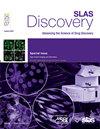A mechanism of action-reflective, dual cell-based bioassay for determining the bioactivity of sclerostin-neutralizing antibodies
IF 2.7
4区 生物学
Q2 BIOCHEMICAL RESEARCH METHODS
引用次数: 0
Abstract
Osteoporosis is a major threat to the elderly worldwide. The Wnt signaling pathway plays a critical role in bone development and homeostasis. Sclerostin, a Wnt ligand inhibitor, competes with Wnt ligands for low-density lipoprotein receptor-related protein 5 or 6 (LRP5/6) on osteoblasts, thereby suppressing bone formation. Sclerostin-neutralizing monoclonal antibodies (mAbs) have emerged as a potential bone-forming therapy for osteoporosis. A cell-based bioassay which determines the relative activity of a product, related to its mechanism of action, is of great importance from drug discovery to quality control and batch release. Currently used cell-based bioassays for sclerostin-neutralizing mAbs usually use Wnt1 or Wnt3a to stimulate the Wnt pathway; sclerostin is a direct inhibitor of Wnt1 but not Wnt3a. Wnt1 is a highly hydrophobic protein that binds to the producing cell membrane and acts in a juxtacrine manner to stimulate the Wnt pathway in neighboring cells. Bioassays for drugs that induce Wnt1 signaling should be performed in a juxtacrine manner. Here, we present a mechanism of action-reflective, dual cell-based reporter gene assay. In this assay, Wnt1 producer cells are co-cultured with cells containing the Wnt reporter genes, Wnt1 on the producer cells activates the Wnt signaling pathway in the reporter cells that are in direct cell-to-cell contact, and sclerostin-neutralizing mAbs specifically and effectively antagonize the sclerostin-mediated Wnt reporter gene suppression. This bioassay demonstrates good specificity, accuracy, linearity, and precision and is suitable for quality control, stability testing, batch release, and biosimilarity assessment of sclerostin-neutralizing mAbs.

反映作用机制的双细胞生物测定法,用于确定硬骨蛋白中和抗体的生物活性。
骨质疏松症是全球老年人面临的主要威胁。Wnt 信号通路在骨骼发育和稳态中起着至关重要的作用。硬骨素是一种 Wnt 配体抑制剂,能与 Wnt 配体竞争成骨细胞上的低密度脂蛋白受体相关蛋白 5 或 6(LRP5/6),从而抑制骨形成。硬骨素中和单克隆抗体(mAbs)已成为治疗骨质疏松症的潜在骨形成疗法。以细胞为基础的生物测定可确定产品的相对活性(与其作用机制有关),从药物发现到质量控制和批量生产都非常重要。目前用于硬骨素中和 mAbs 的细胞生物测定通常使用 Wnt1 或 Wnt3a 来刺激 Wnt 通路;硬骨素是 Wnt1 的直接抑制剂,但不是 Wnt3a 的直接抑制剂。Wnt1 是一种高度疏水性蛋白质,它能与产生细胞的细胞膜结合,并以共刺激方式刺激邻近细胞的 Wnt 通路。对诱导 Wnt1 信号传导的药物进行生物测定时,应采用并列方式。在这里,我们提出了一种反映作用机制的双细胞报告基因检测方法。在这种检测方法中,Wnt1 生产者细胞与含有 Wnt 报告基因的细胞共同培养,生产者细胞上的 Wnt1 会激活细胞间直接接触的报告基因细胞中的 Wnt 信号通路,而硬骨蛋白中和 mAbs 能特异性地有效拮抗硬骨蛋白介导的 Wnt 报告基因抑制。该生物测定方法具有良好的特异性、准确性、线性和精密度,适用于硬骨蛋白中和 mAbs 的质量控制、稳定性测试、批量放行和生物相似性评估。
本文章由计算机程序翻译,如有差异,请以英文原文为准。
求助全文
约1分钟内获得全文
求助全文
来源期刊

SLAS Discovery
Chemistry-Analytical Chemistry
CiteScore
7.00
自引率
3.20%
发文量
58
审稿时长
39 days
期刊介绍:
Advancing Life Sciences R&D: SLAS Discovery reports how scientists develop and utilize novel technologies and/or approaches to provide and characterize chemical and biological tools to understand and treat human disease.
SLAS Discovery is a peer-reviewed journal that publishes scientific reports that enable and improve target validation, evaluate current drug discovery technologies, provide novel research tools, and incorporate research approaches that enhance depth of knowledge and drug discovery success.
SLAS Discovery emphasizes scientific and technical advances in target identification/validation (including chemical probes, RNA silencing, gene editing technologies); biomarker discovery; assay development; virtual, medium- or high-throughput screening (biochemical and biological, biophysical, phenotypic, toxicological, ADME); lead generation/optimization; chemical biology; and informatics (data analysis, image analysis, statistics, bio- and chemo-informatics). Review articles on target biology, new paradigms in drug discovery and advances in drug discovery technologies.
SLAS Discovery is of particular interest to those involved in analytical chemistry, applied microbiology, automation, biochemistry, bioengineering, biomedical optics, biotechnology, bioinformatics, cell biology, DNA science and technology, genetics, information technology, medicinal chemistry, molecular biology, natural products chemistry, organic chemistry, pharmacology, spectroscopy, and toxicology.
SLAS Discovery is a member of the Committee on Publication Ethics (COPE) and was published previously (1996-2016) as the Journal of Biomolecular Screening (JBS).
 求助内容:
求助内容: 应助结果提醒方式:
应助结果提醒方式:


